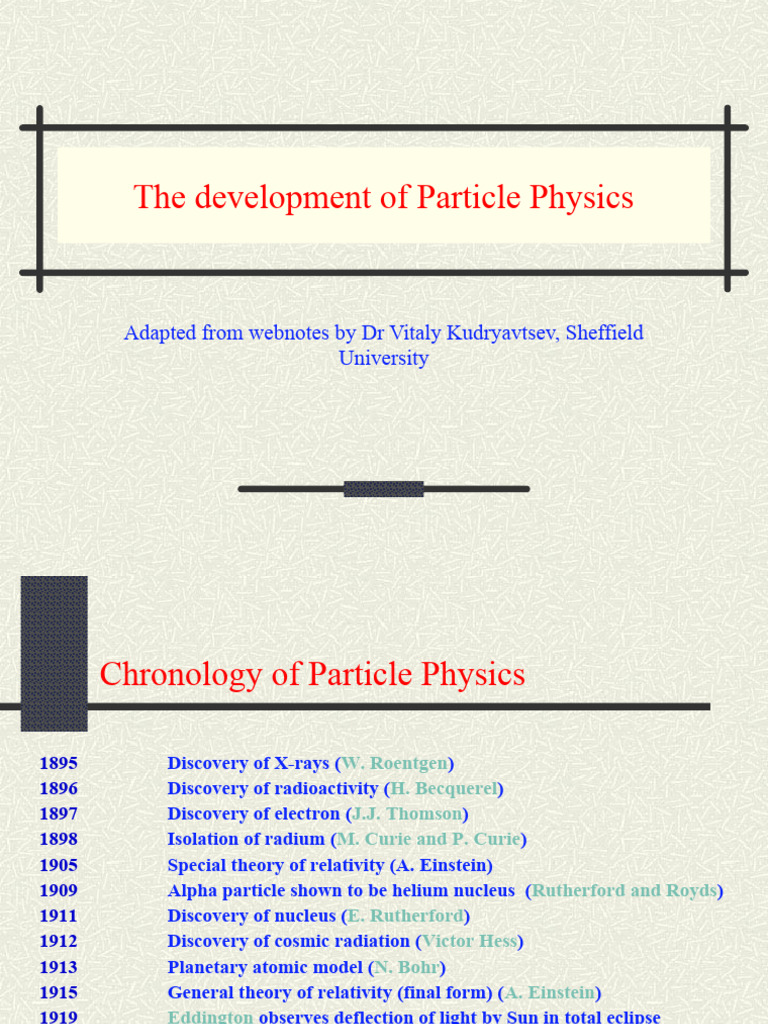The inception of the universe and the genesis of its elementary constituents is a question that has captivated humanity for millennia. One might ponder: who, if anyone, could be credited with having created the very first particle of the universe? This inquiry delves into the realm of cosmology and particle physics, challenging our understanding of creation and existence. To unravel this enigma, we must navigate through the annals of scientific history, theoretical constructs, and the philosophical ramifications of our current understanding.
At the heart of this exploration lies the concept of the Big Bang—a staggering event theorized to have occurred approximately 13.8 billion years ago, marking the inception of time and space as we perceive them. The Big Bang is often characterized as an explosive expansion radiating outward from an incomprehensibly dense and hot singularity. In this nascent cosmos, the fundamental particles—the building blocks of matter—began to coalesce. But what or who could be said to have initiated this momentous event?
In a metaphorical sense, one could liken the universe to a grand symphony, with the Big Bang representing the overture that heralds the beginning of a complex composition. Just as a maestro commands the orchestra, guiding each musician to create harmonious tones, the laws of physics orchestrate the formation of particles. Yet, this maestro is not a singular entity but rather a manifestation of natural forces and properties that govern existence.
The first particles to emerge were quarks and gluons, which, akin to the instrument sections of an orchestra, interacted with one another under the influence of the strong force. These fundamental quarks would later combine to form protons and neutrons, the very nuclei of atoms. As the universe cooled, a new form of matter began to materialize, and the fabric of the cosmos was woven anew—a cosmic tapestry that has continued to evolve ever since.
As we delve deeper, we encounter the pioneering minds that have shaped our understanding of particle physics and cosmology. Figures such as Albert Einstein, who introduced the revolutionary idea that mass and energy are interchangeable, have forever altered the landscape of physics. His theory of relativity established principles that reverberate through our understanding of particles and their interactions. Similarly, the contributions of quantum mechanics pioneers like Niels Bohr and Werner Heisenberg laid the foundational brickwork for comprehending subatomic phenomena. The interplay of these great minds can be seen as the collaborative effort of scientific inquiry, striving to illuminate the shadows of the unknown.
In the ever-expanding quest for knowledge, the Standard Model of particle physics emerges as a remarkable framework that categorizes and elucidates the interactions of fundamental particles. Within this model, the Higgs boson holds a unique place—often dubbed the “God particle” for its pivotal role in endowing mass to particles. The 2012 discovery of the Higgs at CERN’s Large Hadron Collider marked a significant milestone, akin to a crescendo in our understanding of the universe. This discovery raises profound questions: Did the Higgs boson itself emerge from an event orchestrated by forces we scarcely comprehend? Can we ever ascertain a definitive “creator” of the universe’s particles, given that they may ultimately emerge from the fabric of spacetime itself?
Moreover, we encounter the concept of cosmic inflation, a theory that posits a rapid expansion of the universe during its formative moments. This inflationary epoch could be likened to an artist’s canvas being stretched, creating a framework upon which the intricate details of the universe would unfold. Such theories suggest that fundamental particles did not simply appear from nothing; rather, they were intricately woven into the very fabric of existence and emerged through profound mechanisms beyond our current grasp.
To engage with the question of creation invites us to ponder the philosophical ramifications of existence itself. Is creation a singular event, or is it a continuous process of emergence? The notion of a singular creator can be both tantalizing and daunting, forcing us to confront the limitations of human cognition. In grappling with these ideas, we must also entertain the prospect of multiverses—parallel realities in which countless variations of creation may occur. Such contemplations sow the seeds of awe and wonder within the scientific community and beyond.
In conclusion, while we may never arrive at a definitive answer regarding who created the first particle of the universe, the inquiry itself weaves a narrative rich with complexity and profundity. The universe, a majestic tapestry of particles and forces, continues to reveal itself through the diligent exploration of scientists and philosophers alike. Far from a solitary creation, the story of the universe is a multifaceted collaboration of forces, elegantly intertwined as they unfold over the vast expanse of time. As our understanding deepens and our scientific instruments become more sophisticated, we move closer to grasping the enigmatic nature of our reality. In this unending odyssey, one thing remains clear: the allure of the cosmos resides not only in the answers we seek but in the questions themselves—those pivotal inquiries that guide us through the intricate dance of existence.












